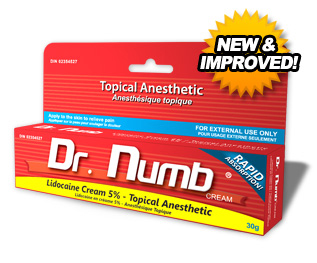 |
| I am not recommending this product. The picture is here to make this blog post more exciting |
Easily the most popular namebrand topical analgesic on the market today is EMLA cream.
| This is EMLA cream - probably the 5% stuff recommended in the 2nd article linked below |
There are studies about other topicals used for circumcision. Of course, understand that all of these studies are done in hospitals where the circumcision procedure is typically considerably longer than a traditional bris. In these case-studies, the baby is "under the knife" or the circumcision instruments and implements for much longer.
The following options are for those who have a compounder nearby - or if your doctor has a prescription idea that sounds like something described below.
The first article I became aware of - saying a 30% lidocaine (with 70% acid-mantle base cream) if efficacious and does not have significant absorption of lidocaine in the body: http://www.ncbi.nlm.nih.gov/pubmed/8414860
The second article notes the previous one, but suggests that a 5% lidocaine-prilocaine cream is even better: http://www.ncbi.nlm.nih.gov/pubmed/10912985
See also this: https://www.uspharmacist.com/article/drug-therapy-considerations-in-circumcision
This one raises other options which include injections. Injections might be the most effective, but remember that no child likes shots, especially not in his penis, and that shots hurt when administered, and have the possibility of hurting later as well.
For those who want something to numb the area, I recommend topical creams as described above. The cream needs to be put on for at least 20 minutes before the procedure (though the longer it is on the more effective it is), and wrapped in place with a piece of plastic-wrap so it doesn't rub off in the diaper.
For those who opt not to do this, your baby, like millions before him through the generations, will be fine.


